Figuring out the behaviors of pet turtles can be perplexing, often leaving owners feeling desperate for answers. From sudden appetite loss to decreased activity levels, there are various reasons why your turtle may refuse to eat. In this comprehensive guide, we’ll examine the primary causes behind a pet turtle’s reluctance to eat, addressing issues such inadequate lighting, stress, dropping water temperatures, preparation for brumation, and more.

In my experience, a turtle that won’t eat isn’t always something to worry about, and there are multiple reasons why it may happen. However, you’ll need to make sure nothing’s wrong before moving on, especially if it’s a baby turtle you’re dealing with.
If the animal lacks appetite and is not moving much then a stressful change in its habitat may be the cause.
What if I also told you that It’s not unseen for an aquatic turtle to suddenly stop accepting pellets?
Anyway, in this article, I will explore the leading causes behind a pet turtle not eating.
See Also: The 14 Types of Freshwater Turtles: The Best Aquarium Companions for a comprehensive list of the most popular pet turtle varieties!
Why is my turtle not eating?
The first time my turtle stopped eating I felt helpless and desperate.
It can be even more alarming if the lack of appetite is accompanied by not moving much and overall inactivity.
There are a couple of reasons why your pet turtle won’t try to eat:
Slow metabolism due to lack of ultraviolet light:
A turtle may be refusing to eat due to a slowed metabolism. The lack of daily UVA light or the decrease in temperature may contribute to slow metabolism in all turtles.
Sometimes turtles naturally slow down their metabolism during certain periods of the year.
However, the wrong lighting setup can make a turtle inactive and potentially sick.
Environmental changes:
Another factor that may play a role in your pet turtle’s lack of appetite is a stressful change to its habitat. Turtles are sensitive to environmental changes, such as tank changes, new tankmates, new food, or habitat changes that may cause stress in turtles, leading to a lack of appetite.
If the turtle has been introduced to its new tank recently, it may not eat because it is too stressed and needs time to settle.
How to fix the issue:
To fix this, ensure that there is no environmental change.
Quality of water:
Water quality should be monitored and checked regularly for nitrite, ammonia, and nitrate levels. Poor water quality leads to stress and causes numerous disorders.
How to Fix: Maintain optimum water quality by regularly changing and filtering water.
Temperature variation: Turtles mainly rely on external heat to regulate body temperature and metabolic processes. Hot or cold temperatures influence the metabolism and appetite of turtles.
How to fix: Use an appropriate thermometer to monitor temperature and ensure the temperature remains in a suitable range.
Illness or health issues: Injury and other health issues seriously impact the normal activities and appetite of turtles; issues, such as respiratory infections, skin rot, parasites, and eye problems cause a lack of appetite.
How to Fix: If health issues arise, seek immediate veterinary assistance to prevent further destruction.
Dietary issues: Providing low-quality and imbalanced nutrition leads to a lack of interest in food, thus affecting appetite.
How to Fix: Research the dietary requirements of turtles and feed them according to their needs, ensuring they get a well-balanced diet.
These are the main reasons why turtles stop eating, and I mentioned how to fix the issue.
Rarely a change in diet may be needed to encourage your pet’s eating habits. For example, most baby turtles need a different type of food compared to when they mature.
Baby turtles are vulnerable and susceptible to health issues owing to their small size and weak immune system. Any abnormal behavior, such as loss of appetite, could be a serious concern for the owner.
Growth and development: Proper feeding and diet are necessary for the development of baby turtles; long-term, refusal to eat hinders their growth.
Let me explain each of the aforementioned causes in detail.
1. Slowed metabolism due to lack of UVA light
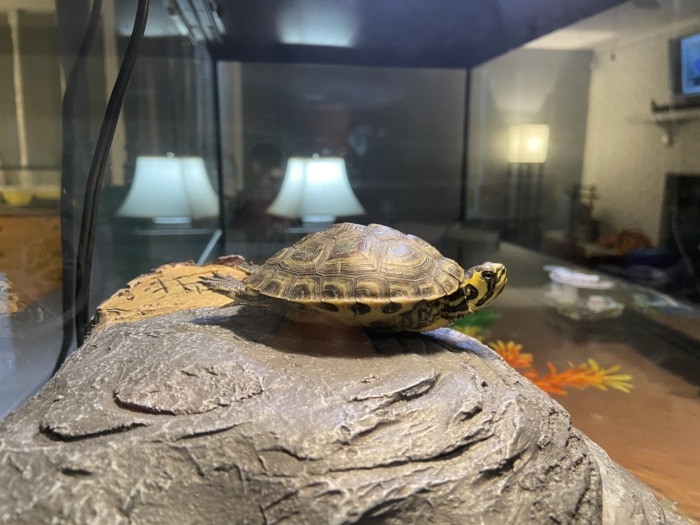
Turtles need daily access to UVA light because it stimulates their appetite, activity, territorial and mating behavior.
UVA light is part of the Ultraviolet spectrum and has a wavelength between 315 and 400 nm.
The lack of daily exposure to this type of light may suppress your turtle’s desire to eat by slowing its metabolism and making it sluggish.
Your turtle tank should have a properly set basking area with bulbs that provide all the right light for your reptiles.
The turtle should be able to bask whenever it feels like maintaining a normal metabolism.
Also, baby turtles need to bask even longer than adults to sustain healthy growth.
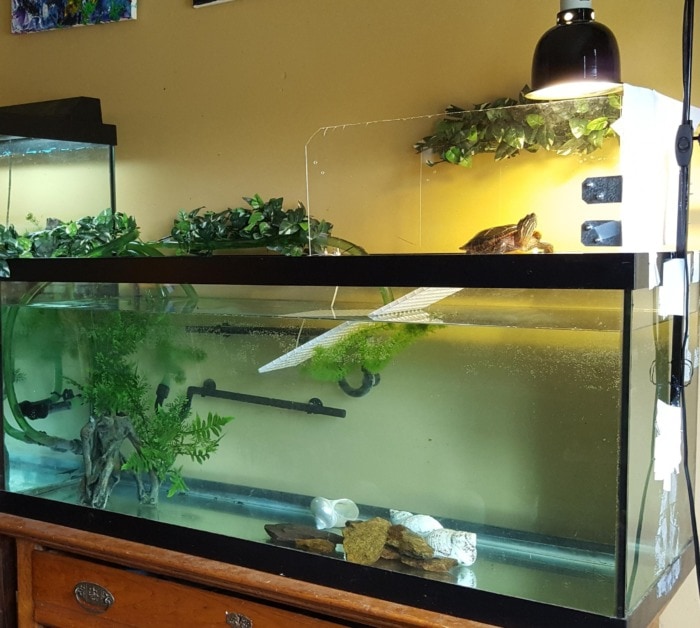
The following is the turtle lighting guide for both UVA light and UVB light:
UVA light is essential for proper metabolism, appetite, and behavior of turtles; in this section, we will discuss how UVA light influences the normal physiological activities of turtles.
Metabolism: UVA light influences the circadian rhythm, also called the biological clock of a turtle, which governs and monitors the metabolism and other physiological functions of a turtle; it controls and regulates the metabolism of a turtle.
Appetite:
Turtles are ectothermic, meaning they adapt their body temperature to environmental temperatures. Temperature changes play a major role in appetite; UVA light induces appetite by mimicking sunlight.
Behavior:
UVA light regulates the behavior of turtles; free turtles bask in sunlight, which is necessary for proper functions and the synthesis of essential items like vitamins. UVA light influences the behavior of turtles, such as basking, hunting movement, etc.
Importance of a proper lighting area with UVA /UVB lighting:
UVA and UVB light are both crucial for the turtle’s well-being and maintenance. UVB light is essential for synthesizing vitamin D3, which is necessary for calcium metabolism. This prevents any metabolic disorders. On the other hand, UVA light works on appetite stimulation, turtle metabolism, turtle basking behavior change, and the turtle’s overall health.
Make sure to incorporate reliable UVA/UVB light lamps designed purposefully for turtles. These are the Turtle UVB Requirements that should be followed.
Turtle basking under UVB lights – Image by Kitty Truck
Ask yourself the following questions to figure out whether your turtle refuses to eat due to lack of proper lighting:
- Does your turtle tank have a basking area?
- Does the basking area include bulbs that provide heat, UVA, and UVB light?
- Have you changed any of the bulbs in the past eight months?
If you answered “no” to the above questions, it might be time to take action.
You can learn pretty much everything about setting up the proper indoor turtle lighting in my article on heat and the best turtle basking lamps for tanks. Visit the link to read the guide, and skim through the included product recommendations to spare yourself some time for research.
Following all the instructions will ensure proper growth due to the UVB light.
While you wait for the delivery of your new bulb, you should likely get your turtle outside in the sun for an hour or two.
Author’s note: Backyards and balconies are fine as long as the turtle has access to both sunny and shady spots. Let your pet do its thing and decide if it wants to move in the sun or a partial shade.
Don’t forget to supervise your turtle and protect it from getting lost or getting attacked by other animals.
Check out this article to see how the right turtle tank filter makes maintenance easier.
2. Stress from being transferred to a new tank
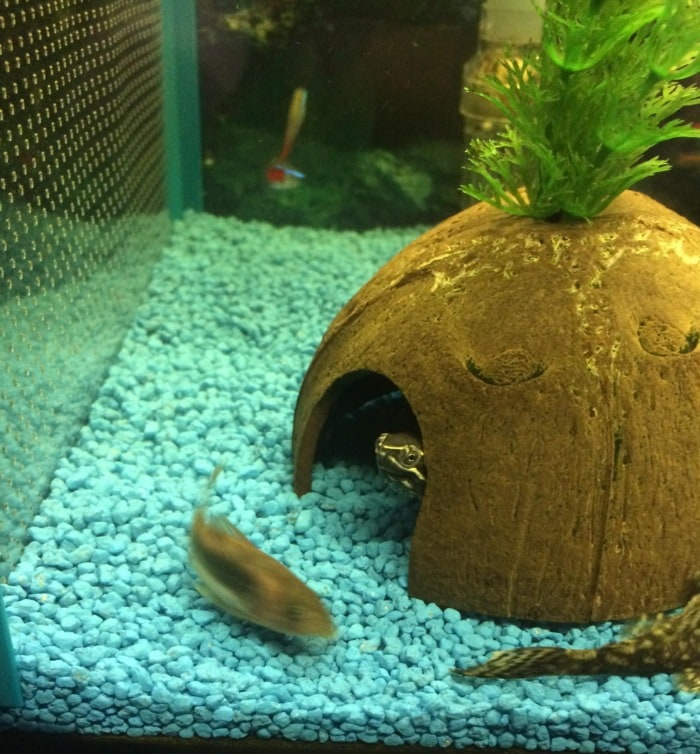
When I first introduced my small red-eared slider to her new turtle tank, she did not eat at all the first week. This got me quite worried, so I sat down and started researching.
It turned out that turtles are creatures of habit, and transitioning from one habitat to another can leave the turtle stressed.
Changes in the turtle’s environment affect appetite and cause stress: Changes in habitat influence appetite, especially if water conditions and surrounding temperature are changed, which can impact regular feeding and appetite.
If your aquatic turtle is new to its tank and you set everything correctly from the start, then it may be that it refuses to eat due to stress from the transition.
Acclimating a turtle:
Like other animals, turtles also get acclimated to a new environment, for which they need some time. While adjusting turtle habitat in new surroundings, they may display many behavioral changes, like changes in feeding habits, hiding, showing inactivity, etc.
It takes turtles up to 2 weeks to settle and feel comfortable in a new habitat.
During this time, the pet may refuse to eat, but that’s normal. When my red-eared Slider felt more comfortable in her new environment, she started accepting food and became more active overall.
Be calm and have patience. Give time to reduce stress on turtles, as getting familiar with the new turtle tank setup and new owner takes some time.
Turtles are very hardy creatures and don’t have a problem going for up to 2 weeks without eating, even in their most active periods.
Anyway, even if you have a baby turtle that doesn’t want to eat at first, it is normal, but you should try to feed it daily.
It’s not ideal for babies not to eat, but they will be fine.
Try offering different types of food to the babies and research the diet of your species of turtle to encourage its appetite.
Also, bear in mind that a turtle’s diet may change depending on its age (more on that in another section below).
Author’s note: Some turtle owners prefer feeding their pets outside the tank. This is a practice that keeps the turtle tank clean and easy to maintain. However, bear in mind that handling causes additional stress for the turtles at first, but they get used to it with time.
3. Dropping water temperatures
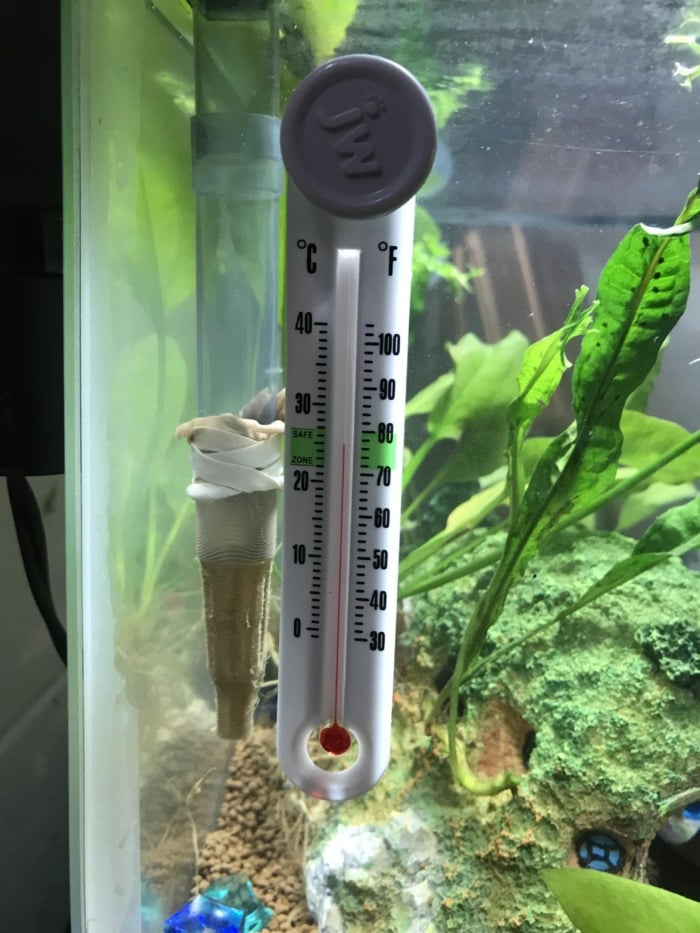
The effect of water temperature on turtle metabolism and appetite:
Turtles are ectothermic, meaning they rely on an external heat source to regulate their body temperature and metabolism. Temperature heavily influences the metabolic rate, with warm water speeding up the metabolism and cold water slowing down the metabolism.
Water temperature significantly impacts the appetite. Turtles want to eat and remain active in the ideal water temperature range.
When temperatures drop, turtles limit their movement and may even stop eating altogether.
Water heater: A water heater with an adjustable range is crucial for the turtle tank to regulate and maintain the required temperature.
Typically, the water temperature in most turtle tanks should be around 75 °F and not exceed 80 °F (between 23.8 and 26.66 °C).
Make sure you note signs of a cold turtle if you don’t have a thermometer, so physically looking at them will help you note and maintain their temperature.
When fall comes, it could affect our turtle tanks without us noticing.
The temperatures drop slightly, but enough for our aquatic turtles to become sluggish and lose much of their appetite.
I recommend getting a separate water thermometer for turtles because the built-in ones some heaters have may be off.
So, you can follow the above turtle tank heater guide for a proper setup.
I have one in my turtle tank because I don’t want my turtle’s comfort and activity levels to be a guessing game.
Both Chewy and Amazon offer a good digital one which you can see by clicking here and here, respectively.
But why do turtles become lethargic when temperatures drop anyway?
Let me explain in the next section.
4. Preparing for brumation during winter (semi-hibernation)
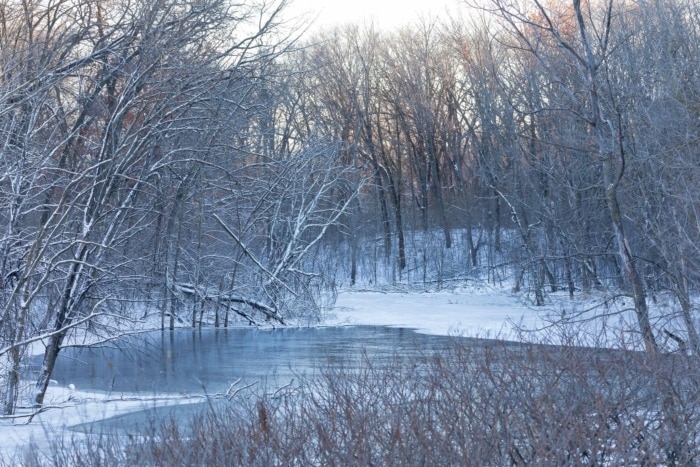
This is because turtles use both temperature and light as indicators for the coming of spring and winter. Along with these metrics, turtles also use the length of day to tell when it’s time to slow down their metabolism.
Experts have hypothesized that turtles may be able to see the different angles at which sunlight falls during winter.
If your tank is near a window, your pet turtle may have recognised the signs that winter is coming.
During winter in the wild, turtles go into a semi-hibernation mode called turtle brumation. When turtles go into brumation, they don’t fall asleep; they remain awake but largely inactive. All pet turtles will be affected to a degree, so you won’t have to worry if yours doesn’t try to eat or move around as much as it used to.
Typically, a pet turtle will start eating less and less in October or November, but that can change depending on where you live. During this time, the turtle will attempt to enter brumation if the environment signals that it’s getting colder.
To prepare for it, your turtle will slow down its metabolism, in which case it needs to pass most of the food into its intestines.
Its metabolism will slow down, so its energy levels and food requirements may decrease.
Most temperate species of turtles will attempt to start brumating during the colder months of the year. Box turtles, painted turtles, and red-eared sliders are all examples of temperate species.
During brumation, a turtle may refuse to eat altogether. This explains why sometimes owners don’t see their pet turtle eating for months. While in brumation mode, a mature, healthy turtle can go up to 160 days (more than five months) without eating anything.
During this, a turtle can lose 1% of its body weight per month, up to 6 or 7% in total. The babies of overwintering turtle species can survive without food for more than a month on their fat reserves, but this is not desirable since it’s considered an extreme living condition. Smaller species should not be allowed to brumate for over two and a half months.
What do I mean by “allowed”? Ideally, you should prevent brumation in your pet turtle. Brumation hides some dangers for your pet, making it more susceptible to disease. It’s not necessarily bad if your pet turtle is healthy overall, but it can be.
The best way to prevent brumation in turtles is to ensure the lighting cycle and temperature throughout the year remain the same in the pet’s tank.
How to prevent turtles from brumating:
Sometimes, it is desirable to prevent turtles from brumating. Here are strategies if the owner wants to avoid it.
Providing proper light and heat:
Proper heat and light sources should be maintained throughout the year, preventing the turtles from brumating.
Proper feeding:
Turtles should be adequately fed through all the seasons of the year. This helps maintain metabolic activities and prevent brumation.
Maintaining a good tank environment:
Tank conditions and the surrounding environment should be consistent and not fluctuating, such as temperature and water quality, which prevent brumation.
Sensing environmental signals:
Environmental signals and cues, such as cold temperatures, which favor brumation, should be sensed and reversed before the onset of brumation.
Winter turtle care:
Adjust your turtle’s habitat temperature and lighting to mimic natural seasonal changes, ensuring proper warmth and light during the colder months.
Turtle winter behavior:
During winter, turtles may exhibit reduced activity, decreased appetite, and increased basking to regulate body temperature.
Do pet turtles bromate?
Yes, some pet turtles may naturally bromate during the colder months, entering a period of dormancy to conserve energy.
Should I let my turtle bromate?
Whether to allow your turtle to bromate depends on species, health, and habitat conditions; consult a reptile veterinarian for guidance tailored to your turtle’s needs.
This is sometimes difficult in places like the Northern USA and Canada. Are you reading this article during the winter?
If your turtle has started brumating, it means that despite your best efforts, it sensed the weather is getting colder and the days are getting shorter.
In these cases, you should probably ramp up the water heater a bit and increase the temperature of the heat lamp in the basking area if its model allows for that.
5. Baby turtles require a different diet
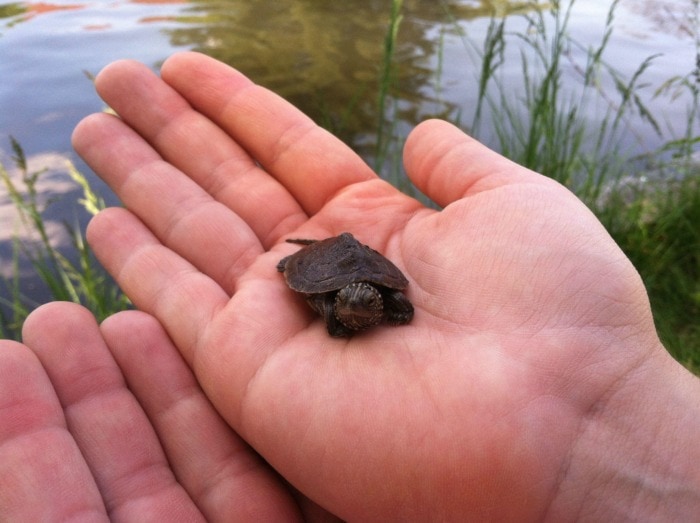
Baby Turtle – Image by WhammyKing121
Most baby turtles need to eat more meat and protein as opposed to mature turtles that prefer to consume more vegetation.
Therefore, if you’re caring for a turtle hatchling, you need to research its diet requirements.
Adult turtle feed: Adult turtles have a slow metabolism and require less energy than young ones. Their feed should consist of vegetables, proteins, and occasional treatment to maintain their health and well-being.
Commercial turtle pellets are prepared for adult turtles; they are readily available and meet the dietary requirements of turtles.
Adult turtles can also be fed occasional treats like earthworms, fish, shrimp, aquatic snails, etc.
The specific diet of a baby turtle will depend on its species, but should primarily consist of small worms, bugs, shrimp, and feeder fish.
Here are some good baby diet plans for feeding baby turtles, the most popular pet:
- Box turtle hatchlings are almost exclusively carnivorous and will often refuse pellets at first. Bloodworms, crickets, nightcrawlers, steamed chicken, or fish (no spices) can all contribute to a varied meat diet. These turtles are shy feeders and don’t like being watched when eating.
- Musk turtle hatchlings should be fed 90% varied meat foods and 10% vegetables or fruit. Earthworms, crickets, feeder guppies, and quality meat pellets are all good choices to supply the baby with protein.
- Red Eared Slider babies should be fed quality pellets with high protein content supplemented with earthworms, crickets or fish, and the occasional romaine lettuce.
- African Sideneck turtle hatchlings will likely prefer nightcrawlers, small feeder fish, and shrimp as a large majority of their diet. Pellets may or may not be accepted at first.
- Baby Painted turtles are attracted to wiggling foods such as small fish and insects, but will also benefit from algae and leafy vegetables. Luckily, this type of turtle accepts pellets from a very young age, which could be a good staple diet, along with the greens.
- Map turtle hatchlings need a diet of pellets and live foods such as worms, small insects, or fish. Map turtles are not picky eaters and will usually accept pellets from early on.
- Aside from quality carnivore pellets, Baby Snapping turtles should eat primarily worms, bugs, feeder fish, or small snails. You should also supply their diet with leafy greens, but only once a week when they’re young.
- Diamondback Terrapin babies can be fed commercial hatchling formula foods daily with a once-a-week treat of crickets, earthworms, shrimp or snails. Terrapin hatchlings are very receptive of commercial foods, which allows to limit the live food treats, unlike with other baby turtles.
Usually, a young turtle will need to maintain its high-protein diet for the first 6 to 12 months of its life.
some examples of suitable foods for baby and adult turtles include:
What do baby turtles eat:
Zoo Med Natural Hatchling Turtle Food
Fluker’s Aquatic Turtle Hatchling Diet
Tetra ReptoMin Baby Floating Food Sticks
The above is the best-recommended food for baby turtles.
Adult Turtle Food:
Mazuri Aquatic Turtle Diet
Hikari Saki-Hikari Turtle Food
Omega One Adult Turtle Sticks
After that, they will gradually switch to a more balanced omnivore diet.
To spare you some more time for research:
Tetra Reptomin offers an excellent hatchling formula for baby turtles. This turtle food has 45% crude protein and is fortified with calcium and vitamin D3. The high protein content is precisely what a turtle hatchling needs and the vitamins are crucial to the healthy development of the shell and bones.
These pellets can be used as staples and will be readily accepted by most babies that have settled.
You can check Reptomin’s hatching formula on both Chewy and Amazon. I’ve selected the exact product in the links for you.
So, I have mentioned almost all the plans of how to feed turtles by age and what should be fed to them.
6. Most aquatic turtle species can only swallow food underwater
It’s physically impossible for most aquatic turtles to eat out of water.
This is because aquatic turtles do not produce saliva and need the help of water to ingest foods.
This is something most turtle owners will learn with time, but I am obligated to mention it.
There are anatomical reasons why turtles are unable to swallow outside water.
Buoyancy and Mobility: Aquatic turtles have well-designed streamlined bodies and feet specified for swimming in water. Inside the water, their bodies allow them to move easily, making it easy for turtles to prey and capture food.
Respiration:
Turtles cannot chew food; they use their beaks to swallow whole prey or tear them into pieces, thus ingesting the smaller pieces. Underwater eating makes them capable of manipulating food in their mouths and breathing air through their nostrils.
Hydration:
Water is necessary for aquatic turtles not only for respiration but also for hydration. Eating underwater enables the turtle to ingest water with food, maintaining their internal water level. This is crucial for turtles inhabiting a freshwater environment.
Feeding aquatic turtles:
Aquatic turtles are carnivorous or omnivorous, eating various foods such as fish, insects, crustaceans, plants, etc. Many of their natural prey items are found in water, making it essential for turtles to hunt and feed underwater to meet their dietary needs.
How do turtles eat?
Turtles use their beak-like jaws to grasp and tear food, swallowing it whole or in small bites. Some species, like snapping turtles, use their powerful jaws to catch prey.
Anatomy of a turtle’s mouth:
A turtle’s mouth is adapted for its diet, with a beak-like structure consisting of a horny keratinous covering that varies in shape and size depending on the species and their feeding habits.
Turtles lack teeth but may have sharp ridges or serrations along their jaws to aid in tearing and grinding food, while aquatic turtles often have specialized tongues and palates for capturing and manipulating prey underwater.
7. Being shy when feeding
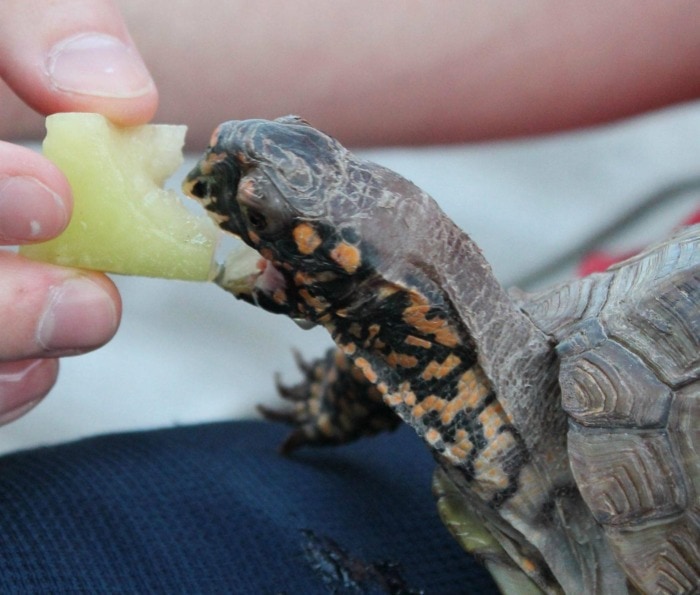
Some turtle species like the Box turtle don’t like being watched while they eat.
This usually happens at an early age and could very well be the reason why your turtle refuses to eat with you around.
If you suspect that you have a shy eater, then I recommend leaving the food in its enclosure and leaving the room for a couple of minutes.
If such behaviors are observed, try these tips to maintain health and feed shy turtles.
Provide food in the enclosure and leave:
Offer feeding turtles in separate containers that are easily approachable, then leave them alone. That is when they need privacy, which is why the feeder needs to leave the room.
Observing after leaving the room:
After leaving the room, allow the turtle some time to access and eat the food without sensing that they are being observed. It gives them space and the choice to eat of their own accord.
Shy turtle eaters should be fed in separate containers.
Author’s note: This behavior is not guaranteed with every turtle, and it largely depends on the individual.
8. Illness: When to See a Vet
If your pet turtle isn’t eating and all else fails, then the animal may be sick and in need of veterinary care.
Most of the time, the lack of appetite would stem from what I’ve listed above, but in some cases, it could be a sick turtle symptom.
In some examples, if noticed alongside a lack of appetite, it is suggestive to see a vet.
Lethargy or lack of energy:
If a turtle is showing inactivity or sluggishness, it is indicative of underlying health concerns. Turtles are usually active, so sluggishness or lethargy is a sign of turtle illness. Veterinary assistance should be sought immediately to sort out the problem.
Shell Abnormalities:
Any changes in the appearance or texture of your turtle’s shell, such as soft spots, discoloration, or shell rot in turtles, may indicate an underlying health issue that needs a vet.
Respiratory Symptoms:
Many respiratory infections in turtles are common and show symptoms such as wheezing, difficulty breathing, nasal discharge, or bubbles around the nose or mouth. When these symptoms are observed, immediate veterinary intervention should be sought.
Eye or Nose Discharge:
Unusual discharge from the eyes or nose can indicate infection or inflammation. If your turtle displays eye or nose discharge along with a decreased appetite, it’s advisable to seek veterinary care immediately for eye problems.
Here are a couple of typical symptoms that may indicate illness in pet turtles:
· Gasping for air when above water.
· Lopsided swimming.
· Bubbles coming out of the turtle’s nose.
· Not being able to dive and just floating.
· Sneezing.
· Excessive basking.
If you notice any or a combination of the symptoms, then your pet might be ill.
Your best course of action would be to take your sick turtle to the vet and follow the vet-recommended care for better health.
I don’t recommend waiting it out, as in some cases antibiotics may be needed to fight the infection.
What to do if your pet turtle is not eating?
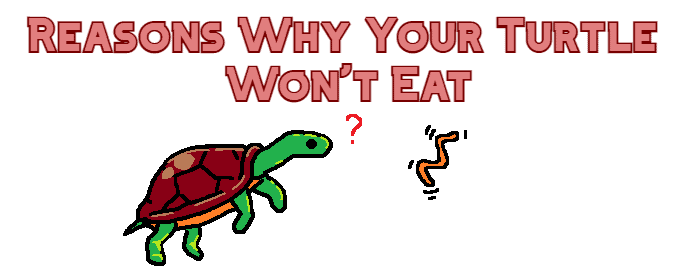
Whether you’re looking after a hatchling or an adult turtle that doesn’t accept food your first course of action should NOT be force feeding.
Given that the most common reason for a turtle to not eat is a slow down in its metabolism you should first try to fix that.
Force-feeding should be your absolute last resort, and only when recommended by a turtle vet.
To help the metabolism of your pet turtle speed up you can:
- Increase the water temperature in the turtle tank by ramping up the heater.
- Increase the heat coming from the heat lamp in the basking area.
- Maintain a steady lighting cycle throughout the year
- Make sure your turtle gets the sufficient amounts of UVA and UVB light each day.
- Move the tank away from the window if it’s located there. Turtles can use the information from the outside to conclude it’s time to brumate and slow their metabolism down.
- Ask a vet for a vitamin shot (they’ll know what to do if they deem it necessary).
How to force-feed a healthy pet turtle that refuses to eat otherwise?
You can ask a vet how to help a turtle eat if it turns out it’s necessary.
Either way, here’s a generally agreed-upon expert method to force-feed a turtle:
1. Soften the usual amount of pellets your turtle would eat by adding turtle tank water to them in a bowl and mashing them up.
2. Fill a 10 ml syringe with the softened food mixture, and then use that to fill up a 1 ml syringe.
3. Hold your turtle at a 45° angle out of the water. This is done to prevent the turtle from choking on food.
4. Rub its nose or front legs to make it open its mouth in defense.
5. After its mouth is open, slowly push in the food with the 1 ml syringe, but do it from the side of the mouth. This is done to, again, minimize the risk of choking. Don’t push the food directly into the turtle’s throat.
6. Return the turtle to the water, where it can swallow the food in peace. Turtles can’t swallow food above water.
7. Patiently wait for the turtle to swallow everything. Don’t rush the process.
8. Repeat the above steps until the turtle has eaten as much as it would normally eat. If you don’t have the right amount – research how much your turtle species should be eating at its current age and weight.
What are the Safe ways to warm up a turtle?
Adjust the ambient temperature using heat lamps or heating pads, ensuring proper basking spots and avoiding direct contact with hot surfaces to prevent burns or overheating.
Emergency turtle care: Assess the turtle’s condition, providing a warm, humid environment and offering shallow water for hydration.
Turtles can be picky eaters and may refuse pellets at first
It takes some trial and error before you find out what your new turtle likes to eat.
In my experience, no food is 100% guaranteed to be accepted and every turtle will have its preferences.
I’ve seen picky turtle eaters who get addicted to shrimp and refuse to take anything else until they wait long enough.
I’ve also seen baby turtles courageously trying pellets and never looking back.
Pellets are something that we introduce to a turtle’s menu gradually. Often, pellets won’t be the first food of choice for a young turtle.
To encourage your turtle to switch to pellet foods, you may need to cut down on other snacks.
One good method I use is soaking the turtle pellets in water from a tuna can (not oil).
Another trick to encourage your baby turtle to switch to pellets is to keep them in its favorite food so that they acquire the smell.
It is also important to remember that a turtle won’t let itself starve if food is present and it can physically eat.
Anyway, as a pet owner, you need to try different turtle food varieties first and see what works.
I’ve found that rotating different brands of good quality foods helps with the growth and health of my pet turtles.
By rotating pellets and experimenting along the way, I make sure that my turtle gets a balanced supply of vitamins and minerals.
Here’s what I usually do to feed my turtles a balanced diet:
Here’s what I usually do to feed my turtles a balanced diet:
- I feed a different type of pellet for every meal;
- I leave fresh leafy vegetables such as Romaine Lettuce in the tank at all times;
- Once a week, I offer live or freeze-dried foods soaked in vitamins.
- Give turtle treats on concluding some task
Offer Variety: Turtles have a predisposition for a variety of foods; by offering different food groups such as commercial turtle pellets, live or Frozen fish, insects and aquatic invertebrates, and a variety of vegetables and leafy greens, you ensure your turtle is getting a balanced diet.
Rotation of Pellet Brands: Rotation between different brands of commercial turtle pellets can increase nutrient intake and ward off nutritional imbalance. Each brand has its unique formulation and ingredient profile, so switching between brands ensures that turtles receive a broader spectrum of nutrients.
Observation of Preferences: Certain turtles show a particular predilection for certain types of prey or vegetables that they eagerly eat. Pay special attention to their preference.
Monitor Nutritional Balance: It is necessary to provide a well-balanced diet containing a mixture of protein, vegetables, and calcium-rich foods to meet the nutrient requirements of turtles.
Gradual Introductions: Gradually and in small quantities introduce the best turtle foods that entice a turtle to eat, allowing them to adjust to new feed ingredients and minimize the risk of digestive illness.
Author’s note: Once your pet turtle learns you’re the “Food God”, it will become a real beggar. To satisfy its insatiable hunger between meals you can offer Romaine Lettuce. Romaine Lettuce is not high on protein and it won’t throw your pet’s diet off balance.
Conclusion
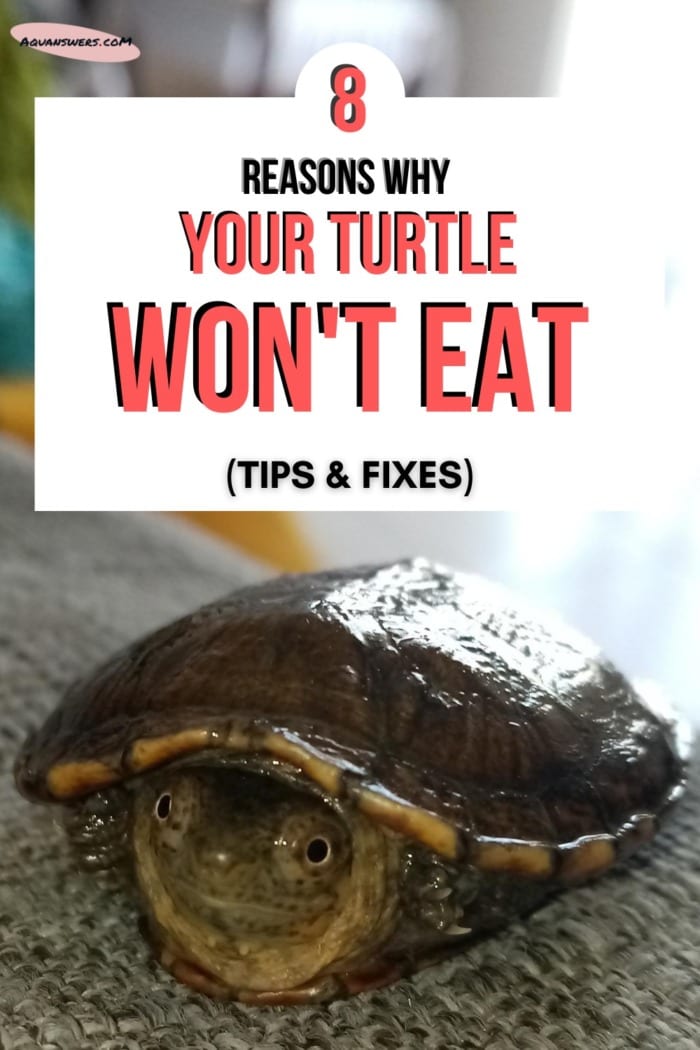
It is essential to notice that turtles are resilient and formidable creatures. If any turtle is observed not eating and not showing signs of sickness, it should be dealt with patience and sympathy, not emotion.
Turtles’ environment must be thoroughly checked, including factors such as temperature, lighting, water quality, and diet. By making necessary adjustments, the problems can be sorted out amicably.
It is worth remembering that turtles are adaptable creatures, and with the proper care and attention, they can overcome challenges and strive to live in their environment.
By providing a stable and supportive habitat and being attentive to their needs, you can help your turtle’s health, maintain an appetite, and lead a fulfilling life by providing long-term turtle care.
The good thing about having a pet turtle is that these creatures are hardy and, usually, you’ll have enough time to figure out why yours has stopped eating.
With time and experience, you’ll learn to spot issues at a glance and fix them quickly.
Leave me a comment below if you need additional guidance or just want to share your success with getting your pet turtle back on track.

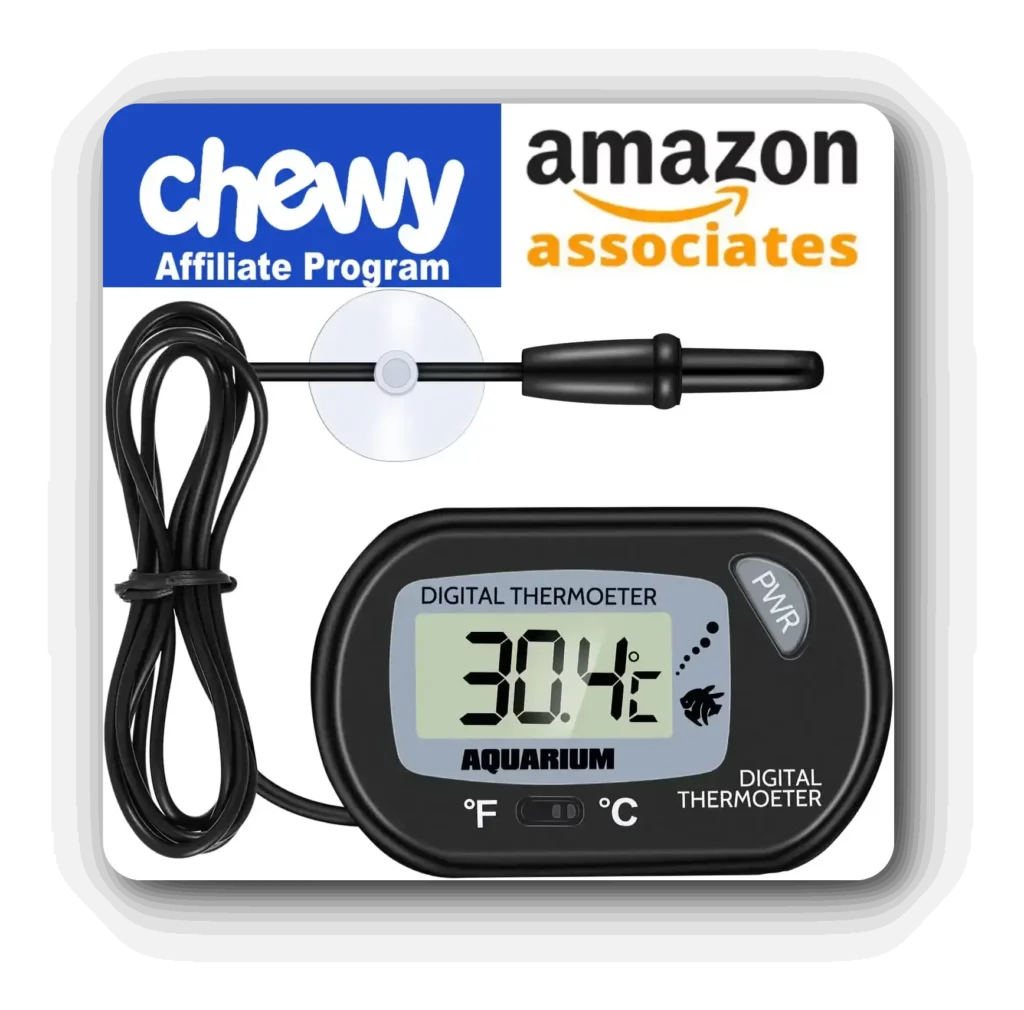
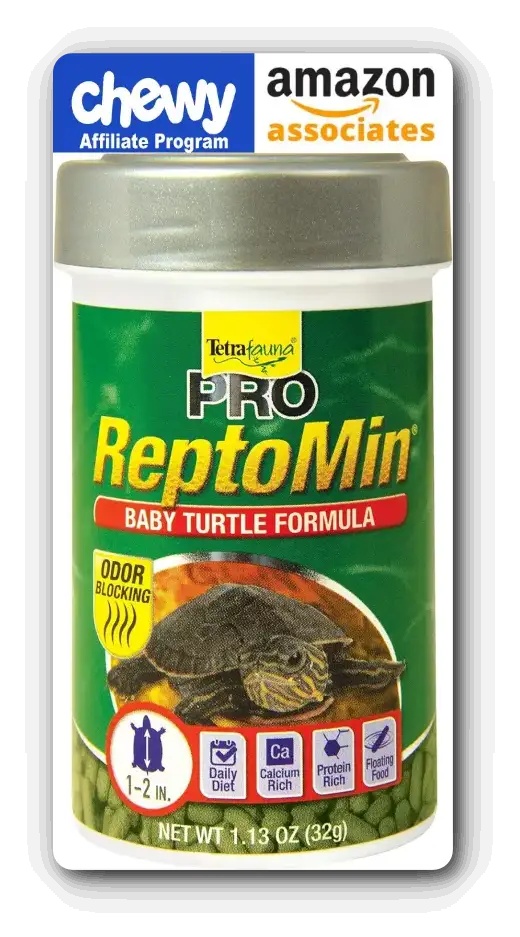
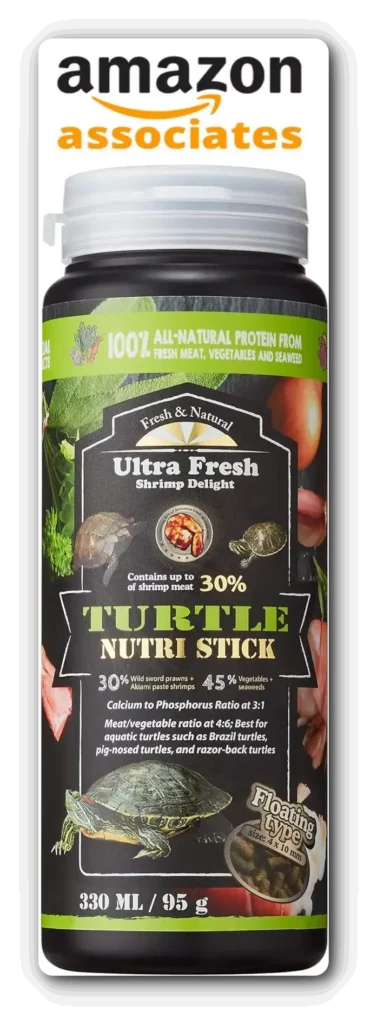
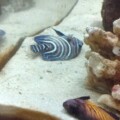
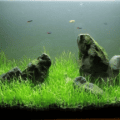
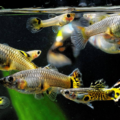
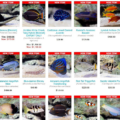
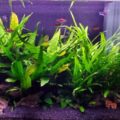
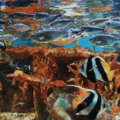
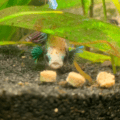
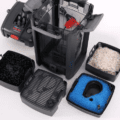
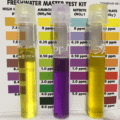

Great tips. I’m thinking maybe the water temp may be the reason “soup” has stopped eating. We have another red ear slider that just celebrated her 50th birthday so hopefully our new one will have a long and healthy life.
Great insights on turtle care! I had no idea that water temperature could affect their appetite. I’ll definitely try adjusting it and see if that helps my little guy start eating again. Thanks for the tips!
Hey, no problem, and thanks for the comment!
Great tips! I never considered that my turtle might be stressed due to tank mates. I’ll definitely try separating them to see if it makes a difference. Thanks for the insight!